Skumpia leather: varieties, planting and care, diseases and reproduction
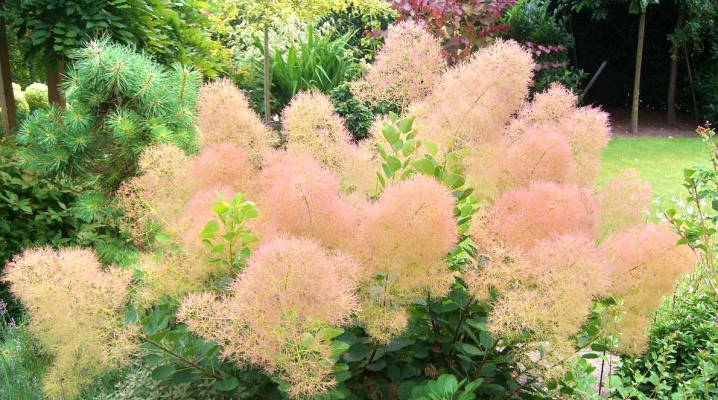
Scumpia is a deciduous tree or shrub belonging to the Sumakhovy family. This plant is considered to be very ancient and is known to many as a tanning tree. Common scump is also called a wig bush or zheltinnik. Its natural habitat is considered to be the North American continent and some regions of Eurasia. Due to the tannins contained in the leaves of the leaves, the plant is used for leather dressing. Today, scumpia is cultivated for industrial purposes and is also cultivated as a garden plant.
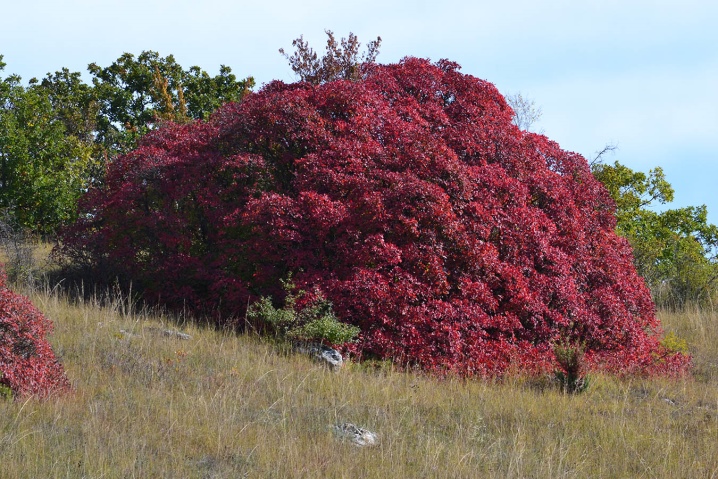
Description
Skumpia tannery is a perennial plant. Trees and shrubs of the zheltinnik represent a branched system, their height can vary from 2 to 5 meters. It all depends on the varietal affiliation of the scumpia. The wig tree can be found in the vastness of Russia. It usually grows in the Rostov and Voronezh regions. The plant became popular in the 17th century, and is still actively used in leather production and perfumery. Scumpia is also used to make dyes.
The wig tree owes its popularity to its decorative appearance, which allows the plant to advantageously fit into the garden landscape. The crown of the scumpia has an umbrella or spherical shape. In summer, the leaves of the plant are light green and dark purple in color. In autumn, they can turn golden and scarlet. This unusual property of the scumpia makes it popular among gardeners.

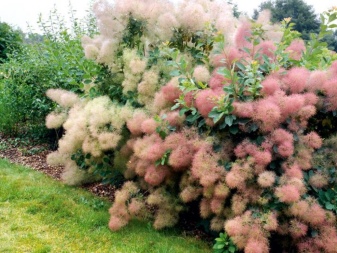
The spectacular flowering of the skumpia tannery also attracts plant lovers. The shrub blooms in late spring or early summer. The yellowberry is abundantly covered with dense paniculate inflorescences. They consist of small flowers, colored scarlet, pale green, white or pinkish. Their length can vary from 15 to 30 centimeters. The light color of the inflorescences, in combination with the extraordinary airiness, creates the effect of a haze around the plant. In English-speaking countries for this reason the plant is called "smoke tree", which means "smoky tree". We call the scumpia a wig tree because of its lush bloom, which visually resembles a voluminous wig.
In its natural habitat, the life span of the yellowberry can reach up to 100 years. At the same time, the lifespan of the tree is combined with its intensive growth. This is due to a well-developed and strong root system. The root grows in a short amount of time. For this reason, two years after planting, you can get a small ornamental garden bush. The same cannot be said about the flowering of the scumpia - it begins to bloom only when it reaches its maturity, at 6-8 years old. By this time, it will be much easier to maintain the shape of the wig tree, since the plant slows down its growth.
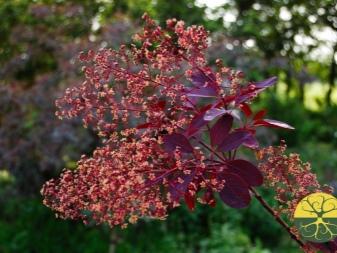
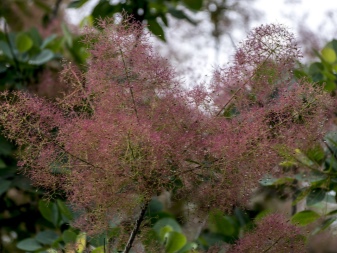
Varieties
The appearance and decorative properties of the yellowberry depend on the plant variety. Any type of skumpia can be used for landscaping the garden area.
Popular types of wig wood include the following.
- Royal Purple. This hybrid is the most popular in Europe. This bush grows up to 1.5 meters. The wide crown of the plant is in the shape of a ball. The color of the leaves is red-brown, with the onset of autumn they turn blue.Needs formative pruning to be done every year. It is recommended to grow in mild climates, as this plant does not tolerate low temperatures very well.
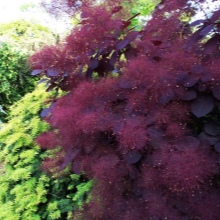
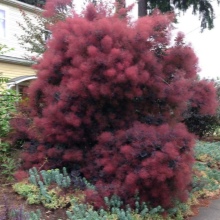
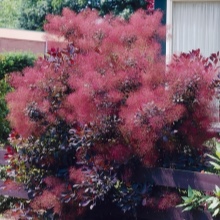
- Rubrifoli. The plant of this variety grows up to 2 meters in height. If the skumpia is grown in the southern regions, then its height can vary from 3 to 5 meters. The leaves of the tree are lilac and turn red with the onset of autumn.
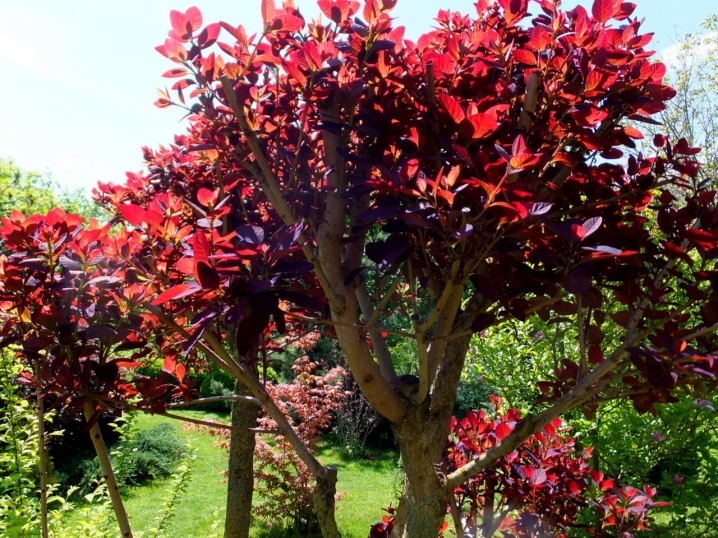
- "Grace". This ornamental shrub can grow up to 3 meters in height. In the summer, the leaves of the scumpia are colored dark red, in the fall they can acquire red or golden hues. Small pink inflorescences appear on the tree in late spring. The culture is resistant to low temperatures and dry periods.
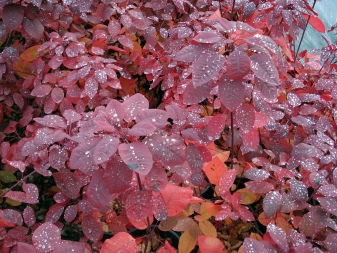
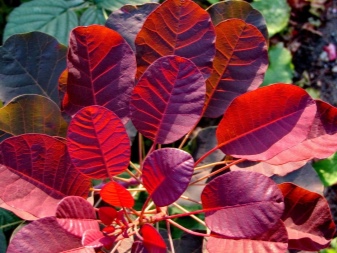
- Golden Spirit. This hybrid is popular among plant lovers, despite the fact that it is picky enough to care for. The tree has an increased level of decorativeness, the leaves, like many other varieties, have a rich color palette, and the flowering is distinguished by its density and contrast.
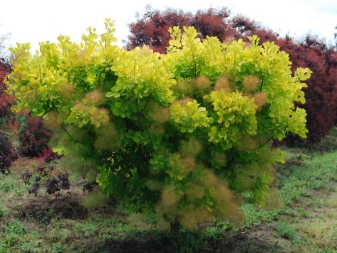
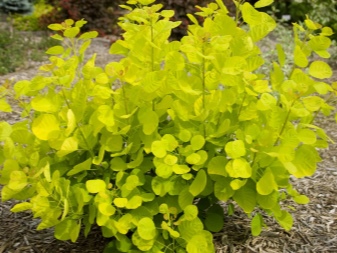
- Follis Purpureus. The crown of this yellowberry is spreading, and the height of the tree can reach 2 meters. During the flowering season, the leaves are colored purple. At the end of summer, the plant is covered with panicles. This hybrid is best suited for growing in warm regions. The growth of the variety is very slow.
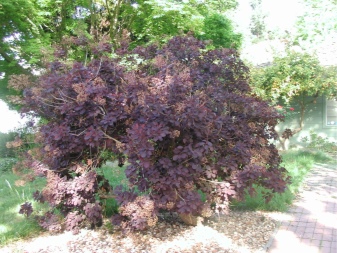
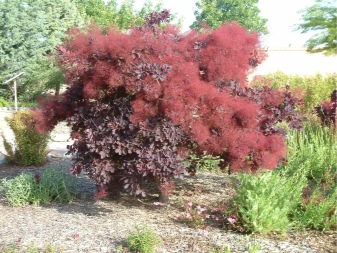
- Young Lady. This hybrid is great for growing in Russia. All thanks to the plant's frost resistance and ease of care. The crown of the wig tree is wide and spherical. The dense leaves of the scumpia are yellow-green in color. The flowering period begins in early summer and continues throughout the season. The plant is unpretentious to the ground, but it takes root best of all in a well-lit area with limestone soil.

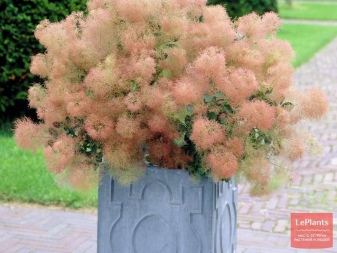
- Lilla. This scumpia variety is a mini version of the Royal Purple because the growth rate of this hybrid is much slower than that of its larger prototype. "Lilla" grows up to 1.2 meters. The leaves have a rich color palette. In the spring they are painted in a scarlet hue, in the summer their color smoothly turns to a plum hue, and in the fall it acquires a golden color.
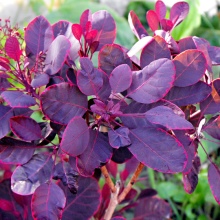
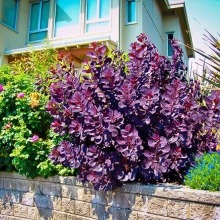
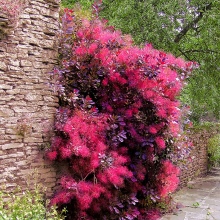
Landing
Usually they make a choice in favor of varieties that are unpretentious in planting and in care. but often gardeners plant zheltinniki, which are characterized by increased decorativeness, but in winter they have to be covered.
It is recommended to purchase seedlings with a closed root system. In this case, plants can be planted in any season of the year, except for winter. It is best to plant scumpia in early spring, so that the shrub has time to take root and get stronger before the onset of cold weather.
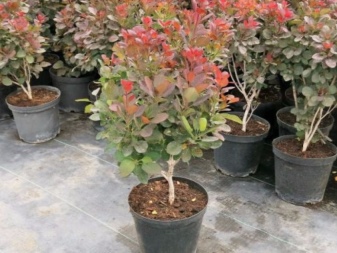
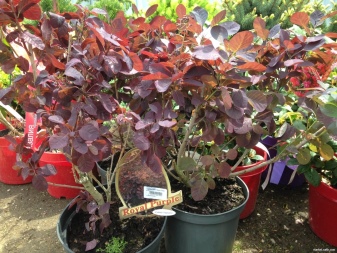
For the cultivation process to be successful, it is necessary to find a suitable planting site. It should be spacious and well lit. The soil can be any, but a light soil that is acidic at a neutral level is best for a wig tree.
Zheltinnik does not like excessive moisture, therefore it is necessary to avoid stagnation of water at its rhizome. An area with close groundwater is not suitable for growing scumpia.
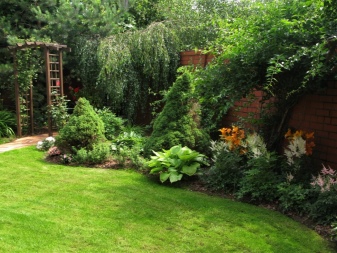
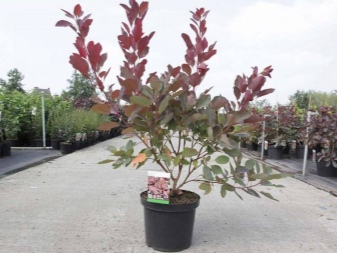
The day before planting in open ground, the seedlings are placed in clean water. Before this, it is necessary to conduct a careful examination of the roots. Damaged and dried parts are removed. Sections should be treated with a fungicide. After processing, the sections are sprinkled with crushed coal.
The size of the pit for planting the yellowberry depends on the size of the root system. The plant does not need fertilizers, as it takes root better in soils with a deficiency of nutrients. Before planting, the pit is filled with water. Two buckets will suffice. It is necessary to wait until all the water is absorbed into the soil, then sprinkle the surface with wood ash. A mound is formed from the ground, in which a seedling is planted.Next, you need to spread the root and fill the hole with earth. Then it remains only to compact the soil and fill it with plenty of water.

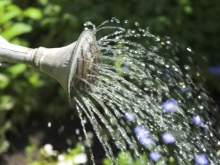
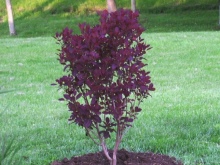
Follow-up care
Caring for the scumpia will not cause much trouble for the gardener. In order for the plant to bloom profusely, it is necessary to perform certain actions when caring for the wig tree.
Watering
Zheltinnik is famous for its drought tolerance. However, this does not mean that the plant does not need moisture at all. If the tree is not watered for a long time, its flowering will not be so abundant, and growth will noticeably slow down. Watering is done when the soil dries out. Water should not get on the leaves, therefore it is recommended to moisten the soil closer to the base. The frequency of water procedures will be reduced, there is mulching in the area of the trunk circle. This process is being carried out in March. In addition, the mulch layer protects the roots from drying out. Mulching is also necessary to distribute moisture evenly.

Top dressing
Scumpia vulgaris is adapted to a lack of fertilizers and grows well on poor soils. In this case, the reaction to feeding is positive. The nutrients help the plant to thrive. Usually, the wig tree is fertilized in March, when there are no leaves on it yet. Phosphate-potassium fertilizer is suitable for feeding. It will help the plant recover from the winter frost. Before flowering, the skumpia can be fed again. This is done in early summer. Organic fertilizer is suitable for feeding. Mullein is commonly used, and in some cases bird droppings are also used. Fertilizing the plant is often not recommended.
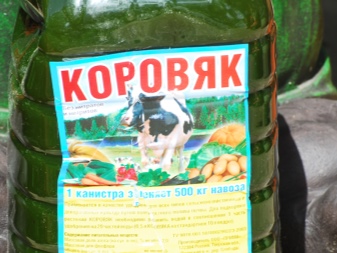
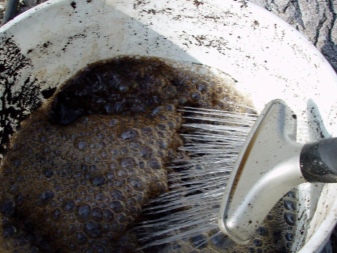
Pruning
Caring for tanning skumpia also involves pruning the plant. This process should be carried out no more than once every 2-3 years. Usually, pruning is done in the spring, before the foliage appears. Formative pruning is often combined with the removal of old or frost-affected branches. Young annual shoots must be cut 2/3 of their length. This will help the shrub grow more branchy and lush. The oldest branches are cut to fit the stump. After pruning, the leaves grow stronger and the crown becomes compact.
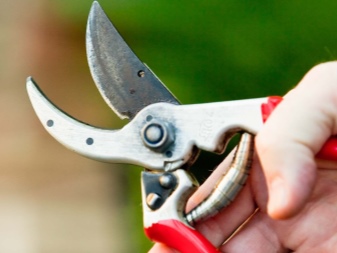
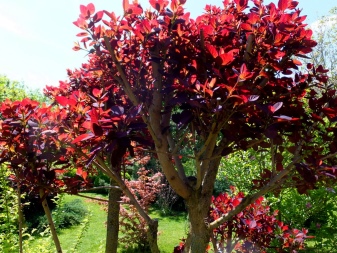
Preparing for winter
Scumpia ordinary is distinguished by its frost resistance. However, even it needs to be insulated for the first few years after planting. Nonwovens are great for shelter construction. You can use lutrasil, then wrap it with cling film. To preserve the root system during the winter period, the shrub is mulched. For this, materials such as humus or peat are suitable.
Many scumpia crops are perfectly adapted for growing in regions with low temperatures, so the plant is excellent for planting in the Moscow region and throughout central Russia. It is worth choosing only frost-resistant hybrid varieties of the wig tree, and the most resistant of them can be grown even in Siberia.
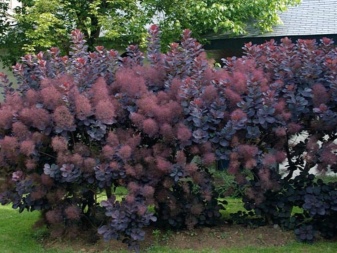
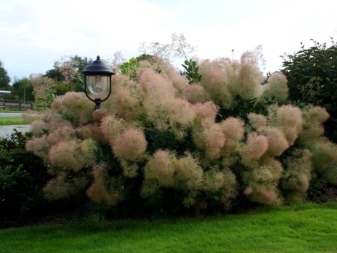
Disease and pest control
The wig tree is resistant to various diseases. Scumpia also feels well protected from insect damage. However, in rare cases, with improper care or any external unfavorable factors, the plant can get sick. Insect pests that settle on the plant can provoke diseases. Among them stand out:
- scumpia lily;
- small pistachio bark beetle;
- fawn leaf beetle.
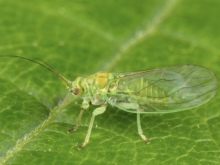


To combat these pests, gardeners recommend using insecticides. It can be "Karbofos", many also use "Decis". The dosage rate is always indicated in the instructions for use of the drugs.
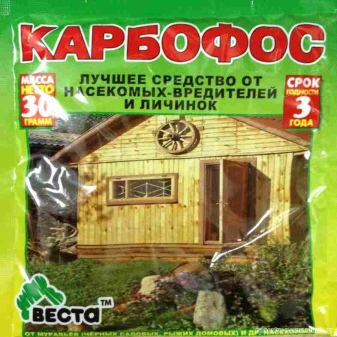
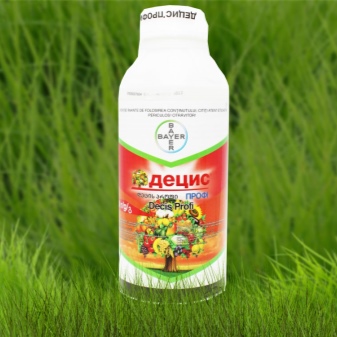
In principle, zheltinniki practically never get sick, however, in rare cases, they are overcome by such a disease as verticillary wilting. It is caused by infection with fungal bacteria. First, they damage the root, after which the fungus spreads over the entire surface of the shrub.With verticellous wilting, the shoots gradually die off, the leaves dry. The branches affected by the fungus must be immediately removed, and the sections must be treated with an antiseptic. If you moderately moisturize the plant, feed it on time and loosen the soil around the tree, you can avoid the appearance of this disease.
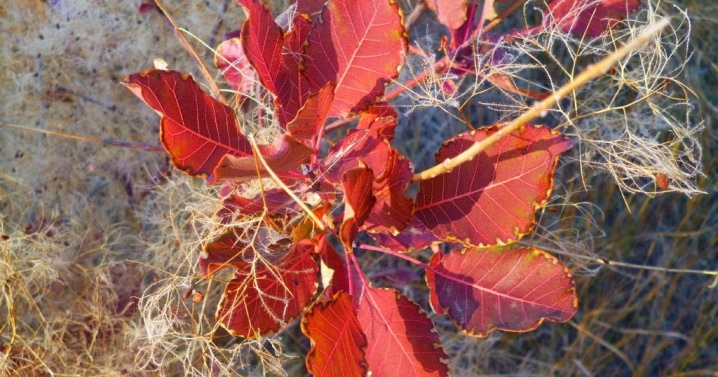
Reproduction
There are several ways to propagate a wig tree.
- Cuttings. Propagation by cuttings is considered the most popular method. Cuttings are harvested in June. Before the planting process itself, it is necessary to immerse the shoots in a heteroauxin solution and keep them there for 12 hours. After planting, the yellowberry needs abundant moisture.
- Growing from seeds. This method is considered one of the most difficult, and in the case of a wig tree, this is no exception. Seed propagation is only suitable for professional gardeners. Initially, the seeds require scarification. This process is mandatory when preparing planting material. The thing is that the seeds are practically impermeable and dense in structure. After scarification has been done, the seeds are stored in a cold place (no more than 4 degrees Celsius) for 3 months. The seeds should be treated with a sulfuric acid solution during the scarification process. The seeds are placed in liquid for 20 minutes. Seeds are usually sown in the fall. But if sowing is planned for the spring, then the seeds lend themselves to stratification. This means that the seeds are naturally aged at low temperatures. Young shoots appear in a year.
- Reproduction by layering. To propagate the plant in this way, it is necessary to make small cuts on the lower branch of the yellowberry, after which the branch is bent to the ground. From above it is sprinkled with soil. Immediately after the appearance of the roots, the plant is separated from the mother.
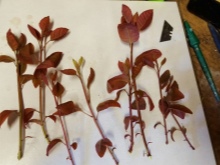
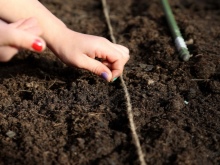

Beautiful examples in landscape design
Skumpia tannery is widely used in landscaping garden and park areas and in landscape design.
- Green hedge. Due to the fact that the zheltinnik lends itself to molding and shearing, it becomes possible to present it in the form of a hedge. The distance between the bushes should be at least 70 centimeters.
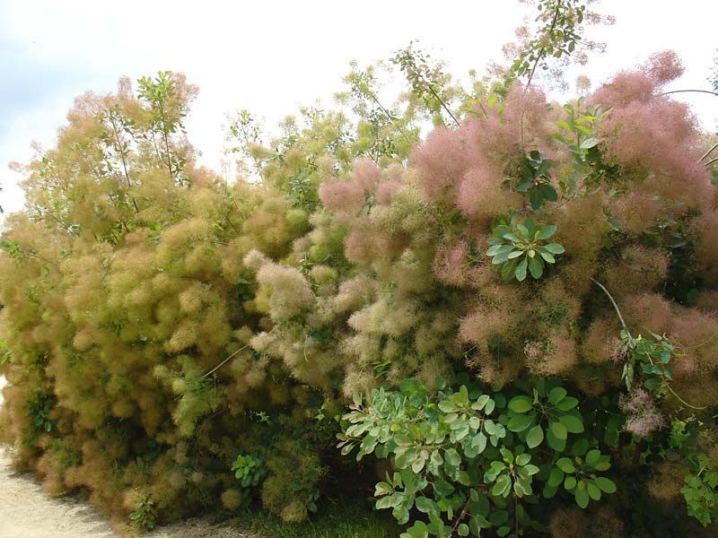
- Group landing. Common scumpia goes well with plants such as boxwood, birch and linden. You can often see her in a group planting with thujas.

- Solitaire landing. This type of planting is presented as a single plant that stands out against a certain background.
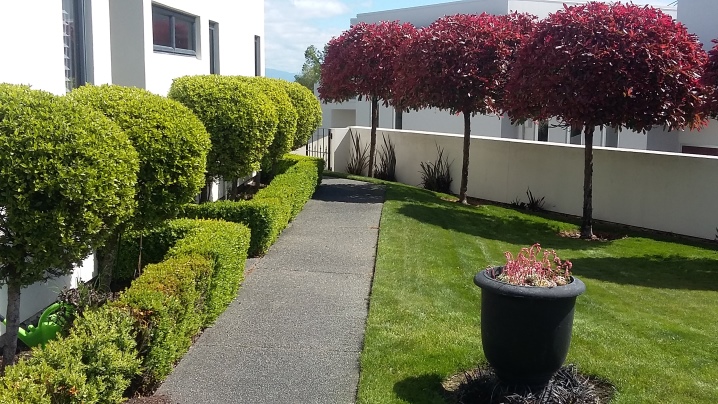
- Purple wig trees look good in single type plantings, and green-leaved representatives of this variety fit perfectly into hedges. They look especially impressive in the autumn. Yellowberry is often planted in city parks because it absorbs polluted air.
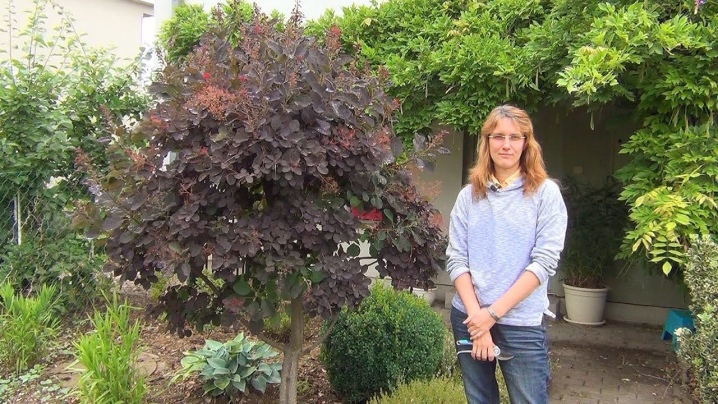
How to form the crown of the scumpia, see the video below.



































































The comment was sent successfully.